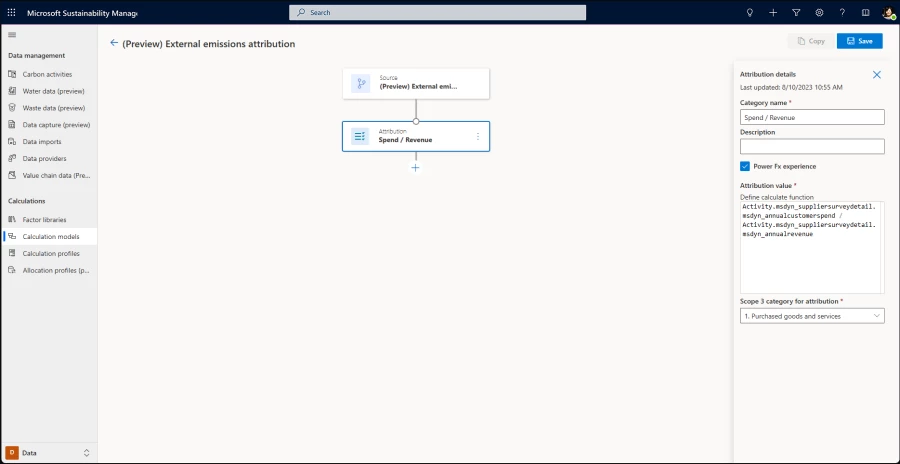
Streamline supplier engagement with the new ESG value chain solution
Solving scope 3 carbon measurement requires a collaborative approach, since up to 90 percent of an average company’s resource footprint occurs in the value chain—upstream or downstream of their own operations.1 Most organizations don’t currently have access to the data they need to do this. Without data, they can’t know the full extent of their carbon footprint, and they won’t know how to fix it.
Transparency is consistently a challenge. Organizations need better visibility into the environmental footprint of their entire operations, products, and value chain. They’ll be required to report on not only their own sustainability impact but also that of their value chain partners (any third party with whom you do business or are otherwise invested and from whom you need to collect data). But data is difficult to collect, especially data that comes from suppliers or other partners outside the organization.
Digital technologies are helping organizations facilitate greater transparency and accountability through their value chain, from raw materials to product creation to distribution. A data-first approach can help drive efficiency, reduce emissions, and design out waste.
Microsoft Cloud for Sustainability solutions help organizations gain more visibility into sustainability activities through their value chain. The new ESG value chain solution can help organizations increase transparency and collect more reliable and accurate information from suppliers up and down their value chain.
ESG value chain
Gather data directly from your value chain partners and calculate your scope 3 emissions with the ESG value chain solution.

Empowering organizations with a streamlined experience for collecting data from suppliers
Now in preview, the environmental, social, and governance (ESG) value chain solution enables you to gather data directly from your value chain partners and use that data to calculate your scope 3 emissions. You can also gather product carbon footprint (PCF) data directly from your suppliers using this feature. (PCF is the total greenhouse gas protocol (GHG) emissions generated during the lifecycle of a product measured in CO2e). While the initial release is specific to collecting emissions and PCF data, future releases will expand functionality to capture water, waste, and additional ESG data as well.
The ESG value chain solution, a feature in Microsoft Sustainability Manager, will enable organizations to collect and report more detailed data about sustainability activities from their value chain partners. With this capability, you can create surveys and other customized workflows designed to collect emissions and ESG data needed for reporting and science-based target setting and reductions.
This solution streamlines supplier engagement and is powerful because once the suppliers’ data is reviewed and approved (by the organization surveying its suppliers) in Microsoft Sustainability Manager, it can be fed right into that organization’s calculations and reporting.

How the ESG value chain solution works
Using a configurable format and integrating with Microsoft Power Platform, you can collect needed information from suppliers and use that data to calculate your scope 3 emissions.
The ESG value chain solution includes a template for gathering emissions and PCF data from value chain partners and can be customized to fit your needs.
Once you gather data from your value chain partners, you can calculate your scope 3 emissions using the new attribution node in calculations.
Supplier engagement needs can vary from basic data collection to supplier data enablement. Microsoft Sustainability Manager provides a breadth of tools to assist in collecting this data.

Gain insights from EcoVadis sustainability ratings. Now in preview, the integration of EcoVadis into Microsoft Sustainability Manager gives you access to their broad supplier sustainability ratings data. Customers that have an EcoVadis account with rated suppliers in the service can track supplier progress on sustainability programs and compare suppliers to select those aligned with their sustainability goals. The report contains assessment of suppliers’ impacts on the environment, labor and human rights, ethics, and sustainable procurement by EcoVadis. Once EcoVadis data provider connection is set up, you can ensure correct (auto or manual) matching to your suppliers in the value chain area. The ratings will show up in the supplier record.

Learn more about setting up and using the ESG value chain solution, including how to:
- Install the Microsoft Power Pages value chain template
- Set up value chain partners
- Activate surveys
- Enable EcoVadis ratings
- Calculate scope 3 emissions
Explore the transformational capabilities of Microsoft Sustainability Manager
With Microsoft Sustainability Manager, we’re unifying data intelligence and enabling comprehensive, integrated, and increasingly automated environmental sustainability management for organizations no matter where they are on their sustainability journey. It’s an extensible solution that unifies data to help organizations more easily record, report, and reduce their environmental sustainability impact. Learn more about Microsoft Sustainability Manager and the solution’s other features that, along with the ESG value chain solution, can help you record, report, and reduce your sustainability footprint and transform your business.
1 “Value chain and supply chain sustainability,” Carbon Trust.




